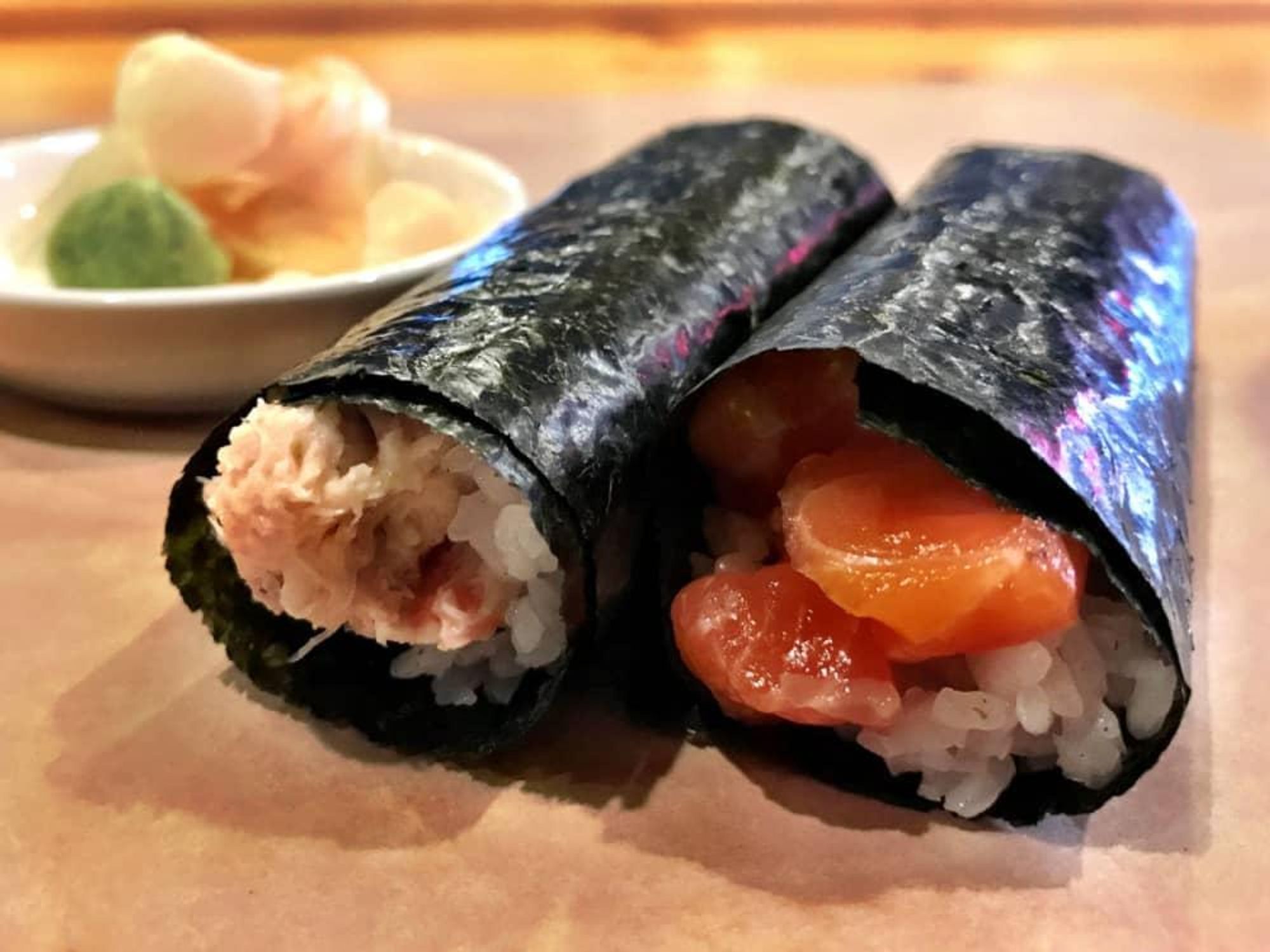Sushi News
Hot sushi trend hits Fort Worth with new West 7th Asian restaurant

A new Asian restaurant specializing in the white-hot trend of hand rolls has opened in the West 7th area. Called Hatsuyuki Handroll Bar, it's the first Fort Worth restaurant to focus solely on sushi hand rolls, or temaki.
Hand rolls are a more forgiving version of sushi. Sheets of seaweed are wrapped in a cone or cylindrical shape, enclosing a filling of rice, fish, and vegetables — your basic sushi ingredients. But they don't require a perfectly tight assembly.
Hand rolls are also simpler in ingredients and construction than the overloaded rolls found at many sushi spots. Forbes magazine recently dubbed hand rolls "the country's hottest lunch trend."
Hatsuyuki opened in July at 907 Foch St., in the same West 7th-area strip mall as La Familia and Chills 360. It has no tables; the only seating is at an attractive horseshoe-shaped sushi bar.
The service format is an unusual combination of fast-casual and full service: Upon entering, you're greeted with a pencil and ordering sheet, which you fill out after taking a seat. Use the form to pick out the hand rolls you want. They’re available a la carte or in sets of three, four, five, or six, with the latter topping out at an affordable $23.
The small menu also includes miso soup, salmon and tuna sashimi, edamame, and sake.
Hatsuyuki comes from local sushi chef Jun Mo Yeon, a former owner of Daan Sushi Asian Bistro & Bar in Grapevine. "I wanted to create something that would stand apart from the everyday sushi you get everywhere else," he says.
His hand rolls are made from crisp sheets of seaweed, twisted into a cylindrical shape and filled with warm rice and your choice of salmon, tuna, scallops, yellowtail, crab, eel, toro, and lobster.
Made as you watch, each roll is handed to you, one at a time. Instead of using chopsticks, you eat them with your hands. If you're sharing, the sushi chef who made your rolls will cut them in half.
They’re meant to be eaten immediately, before the seaweed loses its crispness, Yeon says.
As with regular sushi, they’re accompanied by sides of soy sauce, ginger, and wasabi. But there's no spicy mayonnaise or other sauces that can drown out the flavors of the fish.
"Their simplicity is meant to highlight the freshness and quality of the fish," Yeon says. "Simple to the eye, yet flavorful to the palate."
